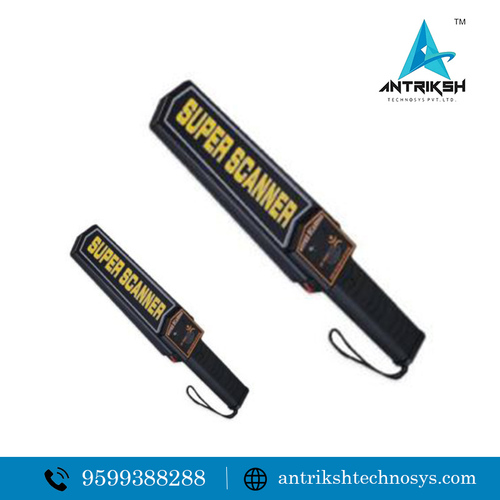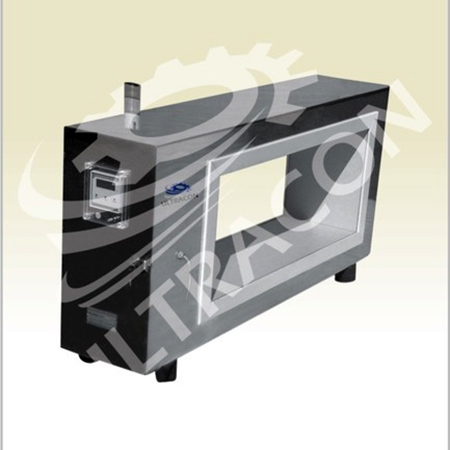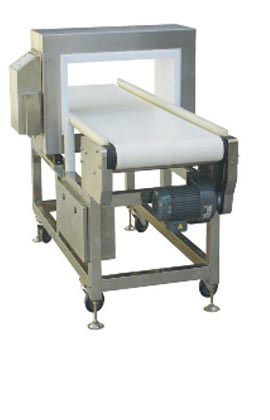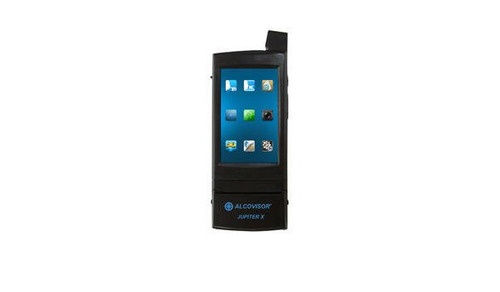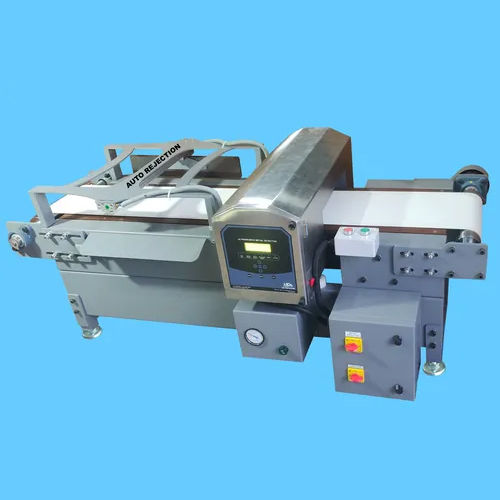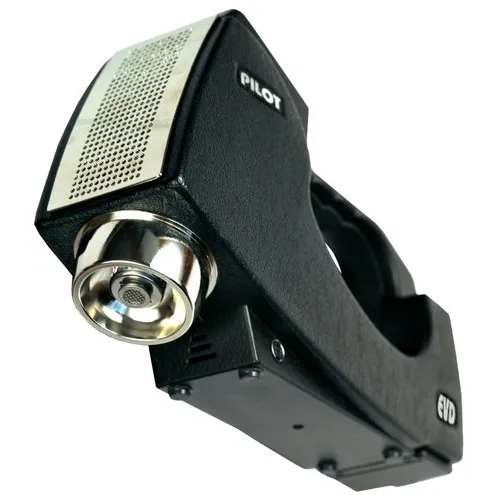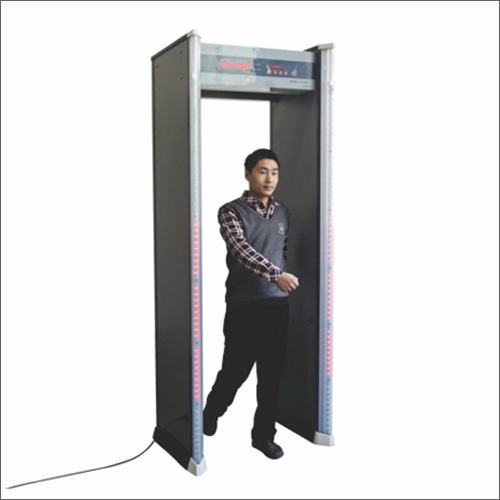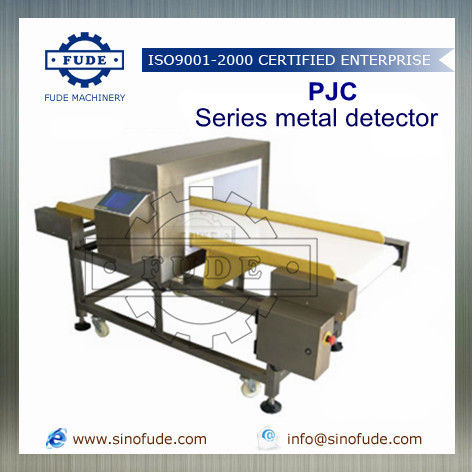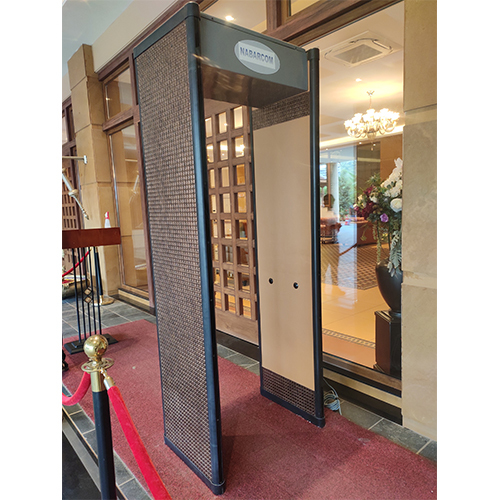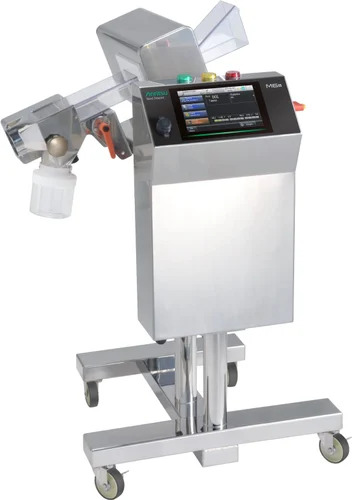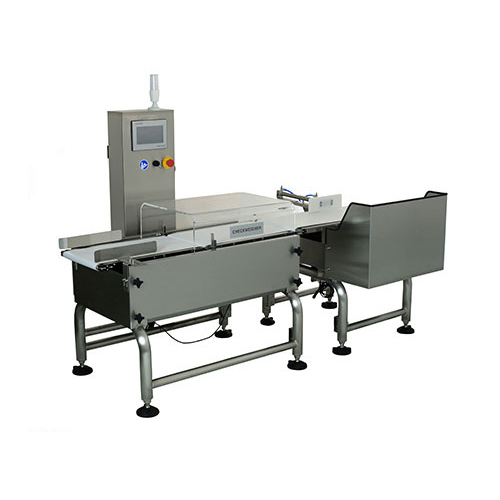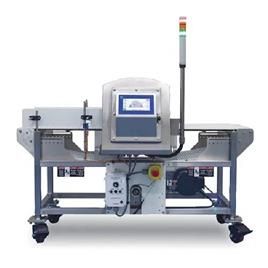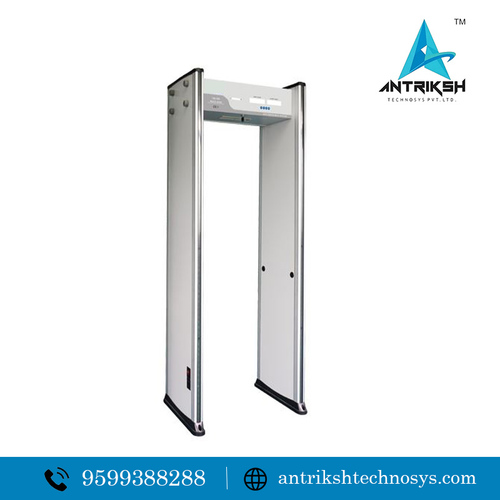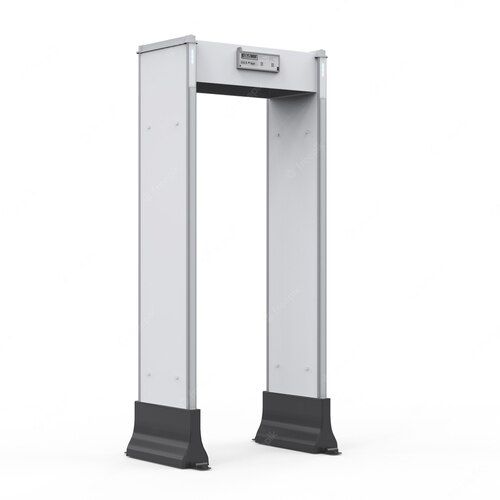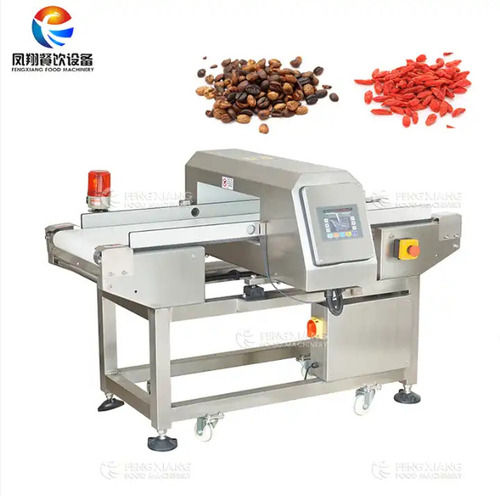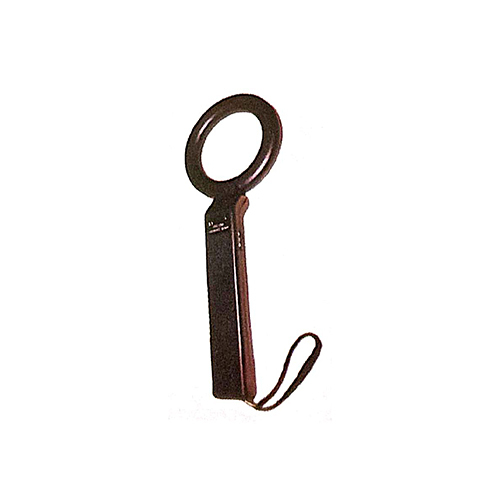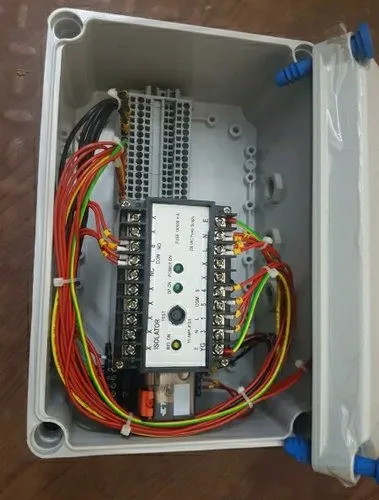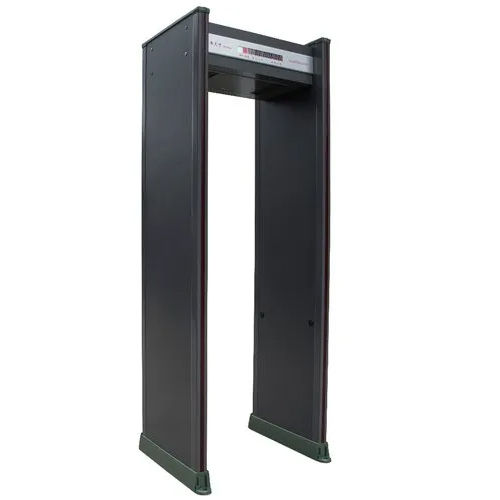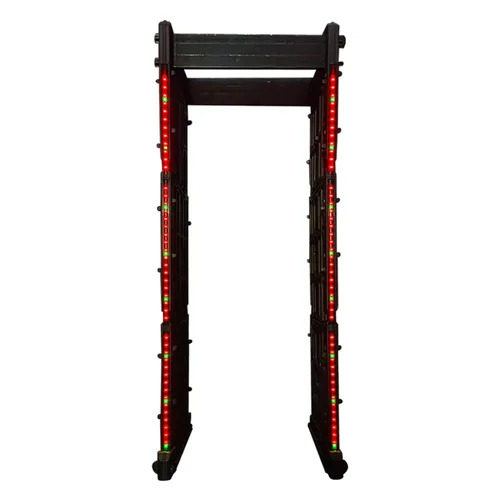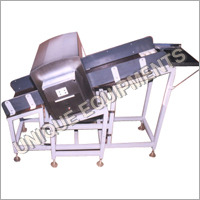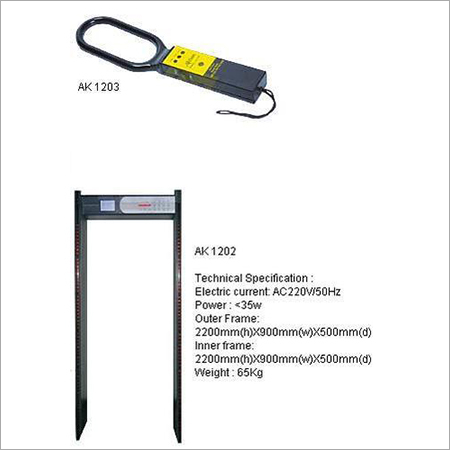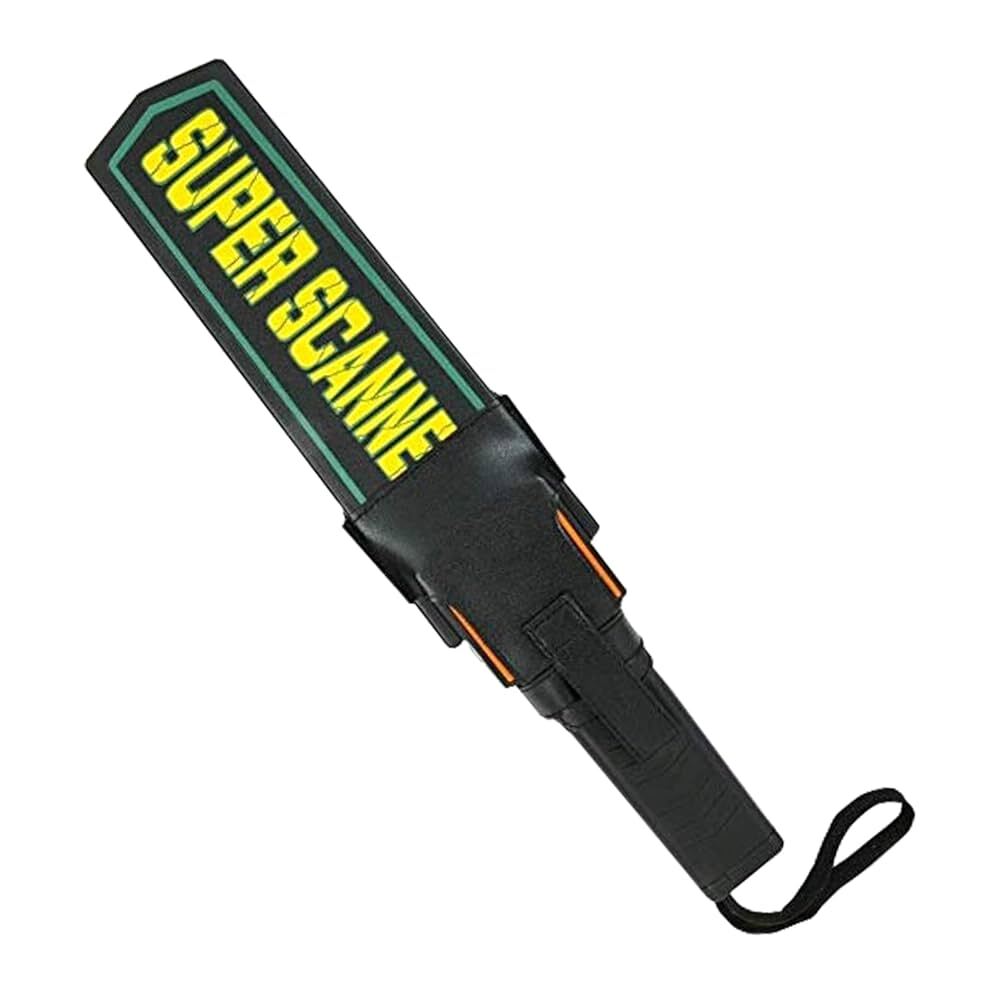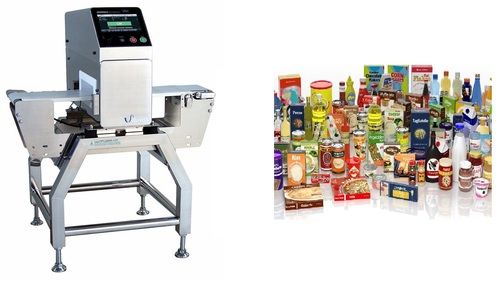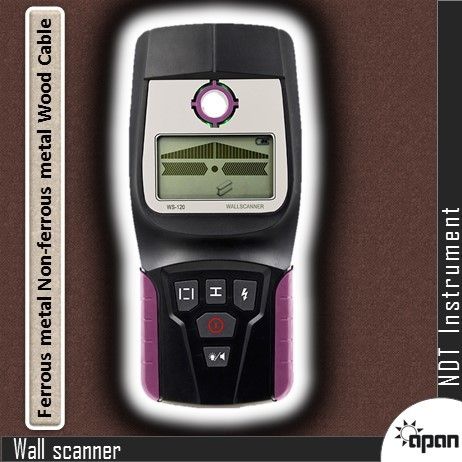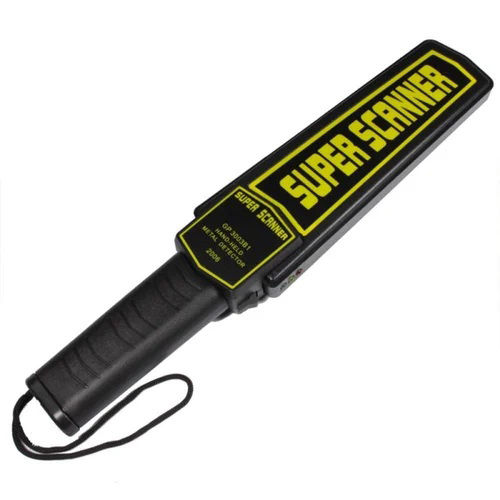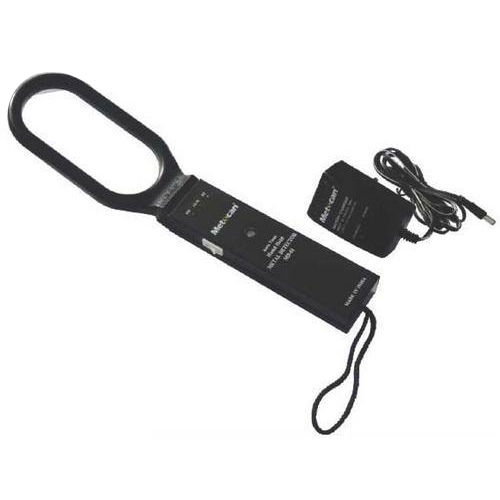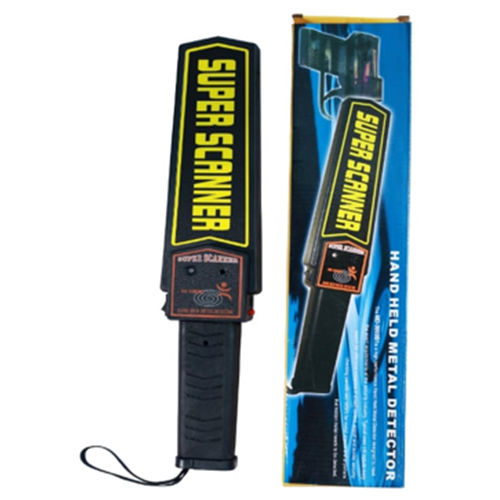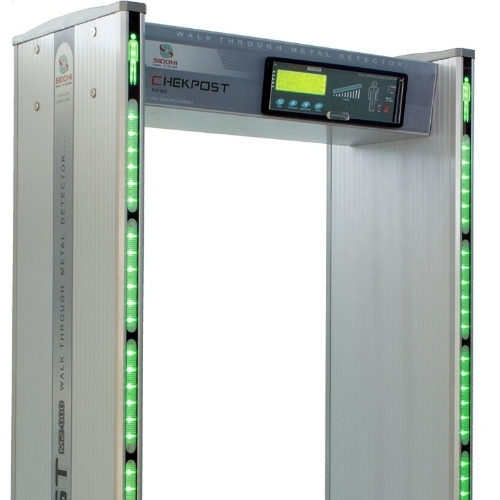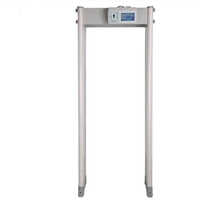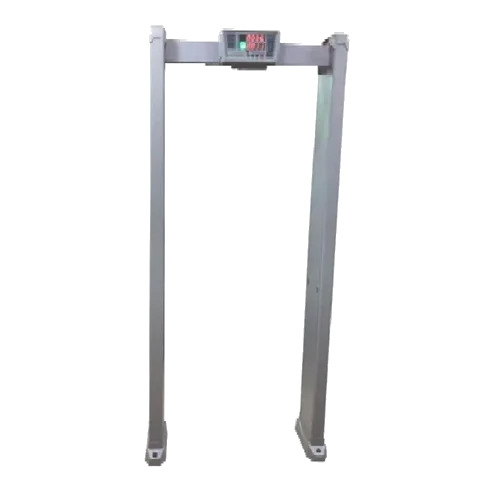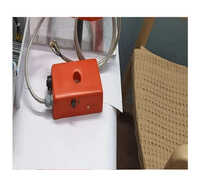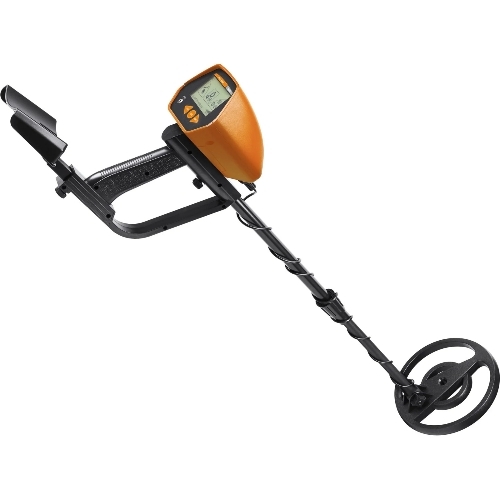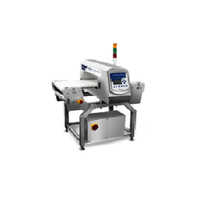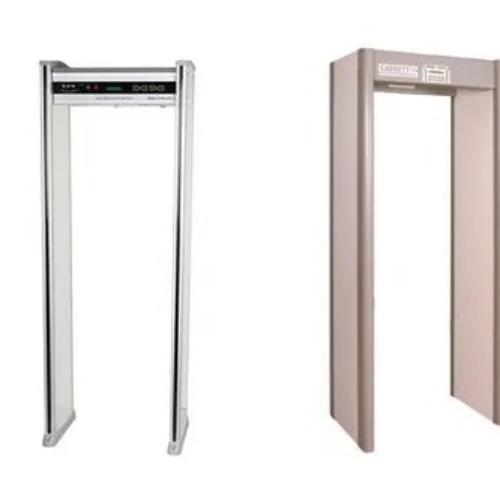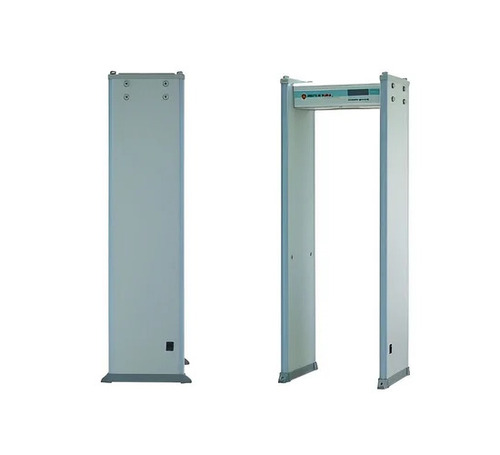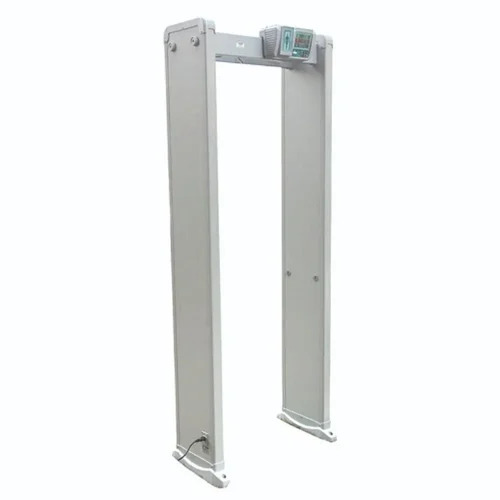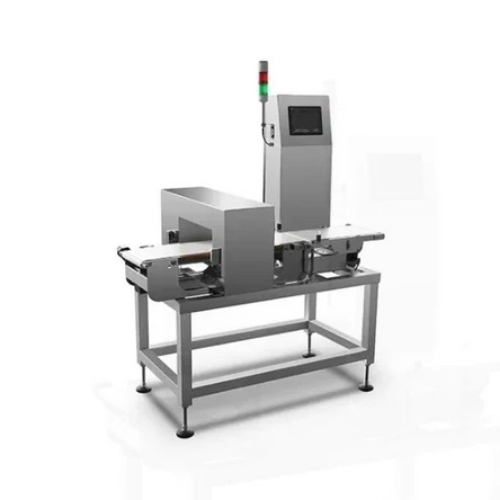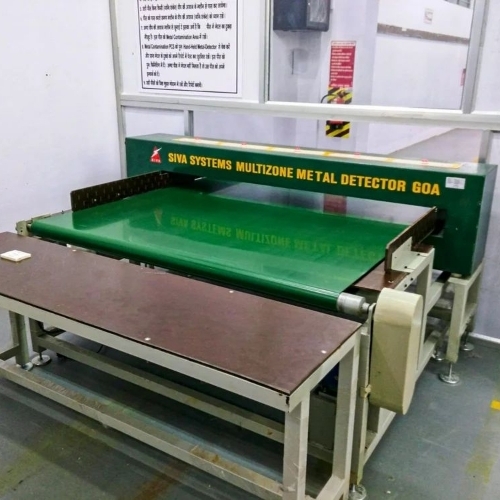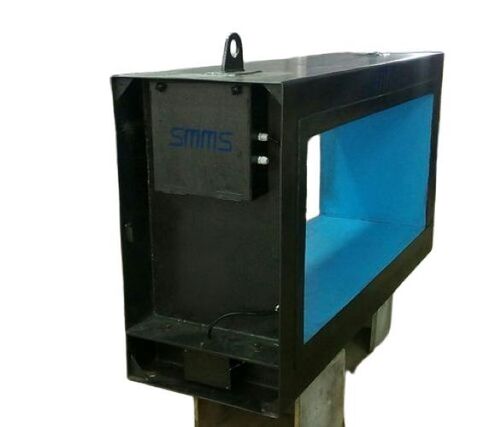Metal Detectors
(1889 products)Hand Held Metal Detector - Black, 50-60Hz Frequency | 40-Hour Operation, Audio/Vibration Alarm, 35mm Detection Distance, Rechargeable Battery Option
1500 INR (Approx.)/Piece
MOQ1 Piece/Pieces
Frequency50 - 60 Hertz (HZ)
Power SupplyElectric
ColorBlack
AlarmSound
UsageMall, Hospital, etc
Warranty1 year
Metal Detector Head - Frequency: 50 Hertz (Hz)
100000 INR (Approx.)/Unit
MOQ1 Unit/Units
AlarmNo
UsageIndustrial
Power SupplyElectric
WaterproofNo
Frequency50 Hertz (HZ)
MaterialMetal
Metal Detector Machine - Advanced Detection Capabilities, User-Friendly Interface, Durable Build Quality
Product DescriptionAs a thought possible corporation, we are dedicated with Manufacturing and Supplying an extensive range of Metal Detector Machine in Thane, Maharashtra, India which is conveniently offered in various features and specifications. The presented reach is definitely modified applying most recent special
Foreview Engineering & Technology Pvt. Ltd.
Navi Mumbai
 Trusted Seller
Trusted Seller Super Seller
Super Seller1 Years
Breath Analyzer Jupiter X - 3.2" TFT Touch Screen, 19.5cm x 7.9cm x 3.5cm, Built-in Printer and GPS, 36,000 Test Records, USB Connection, Sensor Fuel Cell
Price: 56264 INR/Piece
MOQ1 Piece/Pieces
Power SupplyRechargeable lithium-ion battery
WaterproofYes
ApplicationDetection of alcohol level in breath
Sensitivity0.01 mg/L (BAC)
FunctionMeasures blood alcohol content (BAC)
RejecterAutomatic calibration rejection for errors
Kt Automation Private Limited
Vadodara
 Trusted Seller
Trusted Seller Super Premium
Super Premium Premium Seller
Premium Seller15 Years
 Super Premium
Super PremiumConveyor Belt Metal Detectors - Application: Industrial
Price: 450000 INR/Unit
MOQ1 Unit/Units
ApplicationIndustrial
Frequency50/60 Hertz (HZ)
Power SupplyElectric
Product TypeMetal Detectors
FunctionMetal Detector
MaterialStainless Steel
Spectrum Industries
Mangaluru
 Trusted Seller
Trusted Seller Super Seller
Super Seller Premium Seller
Premium Seller23 Years
Bread Metal Detector - Color: Sliver
Price: 300000 INR/Unit
MOQ1 Unit/Units
Frequency50 Hertz (HZ)
Power SupplyElectric
Warranty1 Years
Product TypeBread Metal Detector
UsageIndustrial
ColorSliver
Ultracon Engimech Pvt. Ltd.
Ahmedabad
 Super Bonanza
Super Bonanza Trusted Seller
Trusted Seller10 Years
Vapor Trace Detector (Evd) - Application: Airports Security
Price: 3000000 INR/Unit
MOQ1 Unit/Units
Dimension (L*W*H)300 X 180 X 90 Millimeter (mm)
Product TypeVapor Trace Detector (EVD)
Warranty1 year
Power SupplyDC 6V rechargeable battery
ColorBlack
ApplicationAirports Security ,Transportation Hubs, Government Buildings , Public Venues, Corporate Offices
Kapri Corp
Mumbai
 Trusted Seller
Trusted Seller Super Premium
Super Premium16 Years
 Super Premium
Super PremiumHand Held Metal Detector - Ultra High Sensitivity, Lightweight 275g in Elegant Black | Detects Ferrous & Non Ferrous Metals, Rechargeable Battery, Audio/Visual Alarm
Product DescriptionWe provide Hand Held Metal Detector which is used for detection of ferrous and Non ferrous metals with uniform accuracy and sensitivity . It is being effectively used for body search , detection of parcels , etc and are being widely used in airports ,shopping malls and various public places \015\012
Door Frame Metal Detector - Metal, 2.2m Height x 0.8m Width x 0.3m Depth, 50kg Weight | Adjustable Sensitivity, Multiple Detection Zones, Password Protected Controls
MOQ1 Piece/Pieces
Supply Ability1000 Per Month
Delivery Time1-7 Days
Smartech Safety Solutions Pvt. Ltd.
Pune
 Trusted Seller
Trusted Seller Super Seller
Super Seller5 Years
Candy Metal Detector
Price Trend: 3000.00 - 4000.00 USD ($)/Set
MOQ1 Set/Sets
RejecterAutomatic reject mechanism
Power Supply230V AC, 50 Hz / 60 Hz
WaterproofOther, IP65 rated for water resistance
Shanghai Fude Machinery Manufacturing Co., Ltd.
Shanghai
 Trusted Seller
Trusted Seller Super Seller
Super Seller13 Years
Door Frame Metal Detector - Application: Industrial
Price: 42000.0 INR/Unit
MOQ1 Unit/Units
UsageIndustrial
AlarmSound And Light
Warranty1 Year
Frequency50-60 Hertz (HZ)
Product TypeMarigod Banquets Door Frame Metal Detector
ApplicationIndustrial
Nabar Communications & Office Automation Products Pvt Ltd
Pune
 Trusted Seller
Trusted Seller Premium Seller
Premium Seller6 Years
Ss Tablet Inspection Metal Detector - Color: Silver
Price: 190000 INR/Piece
MOQ1 Piece/Pieces
Warranty1 Year
MaterialStainless Steel
UsageLabratories
FunctionAutomatic
Power SupplyElectric
ColorSilver
Dd Pharmatech
Kangra
 Trusted Seller
Trusted Seller Premium Seller
Premium Seller1 Years
Checkweigher Machine - Stainless Steel , High Accuracy for Commercial Applications
MOQ10 Unit/Units
MaterialStainless Steel
WaterproofNo
Power SupplyElectricity
ApplicationCommercial
UsageCommercial
Wenzhou Trustar Machinery Technology Co., Ltd.
Ruian
 Trusted Seller
Trusted Seller Premium Seller
Premium Seller3 Years
Metal Detecting Machine, Alarm Mode: Buzzer + LED Display
Product DescriptionMetal Detecting Machine
Absolute Motion
Kolkata
 Trusted Seller
Trusted Seller5 Years
Six Zones Walk Through Metal Detector - Color: White
Price: 55000.00 INR/Piece
MOQ1 Piece/Pieces
UsageSecurity
Frequency50 - 60 Hertz (HZ)
Warranty1 Year
ColorWhite
Dimension (L*W*H)910 x 590 x 2170 Millimeter (mm)
MaterialMild Steel
Antriksh Technosys Pvt. Ltd.
New Delhi
 Trusted Seller
Trusted Seller Super Seller
Super Seller15 Years
SRTEC Walk Through Metal Detector - Single Zone Design, Detects Ferrous & Nonferrous Metals, Aesthetically Designed Archway , Quick Installation for High-Security Applications
ApplicationAirports, Government Buildings, and High-Security Facilities
ColorWhite
UsageUsed for security screening purposes
Product TypeDoor Frame Metal Detector
Srtec Automation
Kolkata
 Trusted Seller
Trusted Seller Premium Seller
Premium Seller4 Years
Metal Detector Machine For Food Industry
UsageDetect metal in food items
ColorSilver
ApplicationFood industry
Zhaoqing Fengxiang Food Machinery Co., Ltd.
Guangdong
 Trusted Seller
Trusted Seller Premium Seller
Premium Seller3 Years
Ss2 Hand Held Metal Detector - Application: Commercial
MOQ10 Piece/Pieces
MaterialMetal
Warranty1 Year
ApplicationCommercial
WaterproofYes
ColorAs Per Availability
Power SupplyManual
Kothari Fire Safety Equipments
Secunderabad
 Trusted Seller
Trusted Seller Premium Seller
Premium Seller1 Years
Edge Metal Detectors - Color: White
Price: 68000 INR/Piece
MOQ10 Piece/Pieces
ColorWhite
UsageIndustrial
MaterialMild Steel
Power Supply230V AC
Frequency60 Hertz (HZ)
Weight20 Kilograms (kg)
Shri Nath Engineers
New Delhi
 Trusted Seller
Trusted Seller Premium Seller
Premium Seller3 Years
Multi Zone Metal Detectors - Color: Any
Price: 45000 INR/Piece
MOQ1 Piece/Pieces
AlarmYes
ColorAny
MaterialMetal
WarrantyYes
UsageIndustrial
Gmr Engineering And Automation
Hyderabad
 Trusted Seller
Trusted Seller Premium Seller
Premium Seller2 Years
Portable Door Frame Metal Detector - Color: Multiple
Price: 200000 INR/Piece
MOQ1 Piece/Pieces
ColorMultiple
Frequency50Hz Hertz (HZ)
UsageIndustrial
Dimension (L*W*H)2200mm to 2230mm (Height) x 800mm Millimeter (mm)
WarrantyYes
Technospacio Tech Solution Pvt Ltd
Bengaluru
 Premium Seller
Premium Seller1 Years
Metal Detectors - Material: Steel
Price Trend: 280000.00 - 380000.00 INR/Unit
MOQ1 Unit/Units
MaterialSteel
Temperature Range10-60 Celsius (oC)
Warranty1 Year
UsageIt is use for detecting foreign objects.
WaterproofNo
Unique Equipments
Chicalim
 Trusted Seller
Trusted Seller Premium Seller
Premium Seller18 Years
Hand Held Metal Detectors Waterproof: No
Price Trend: 1200.00 - 3500.00 INR/Piece
MOQ10 Piece/Pieces
WaterproofNo
MaterialMetal
Input Power<35 Kilowatt (kW)
UsageSafety
Anupam Udyog
Kolkata
 Trusted Seller
Trusted Seller Super Seller
Super Seller11 Years
Suunto Ambit Silver GPS Watch
Price: 3500.00 INR/Unit
MOQ10 , Piece/Pieces
Delivery Time7 Days
Hand Held Metal Detector Application: At Security Check Points
MOQ50 Piece/Pieces
Materialmild steel
Product TypeHand Held Metal Detectors
WaterproofYes
Sensitivityhigh
Warrantyyes
Power Supplybattery operated
T M S Services And Wireless Solutions
New Delhi
 Trusted Seller
Trusted Seller Premium Seller
Premium Seller2 Years
Food Metal Detector - Metal Construction, 60 kg Weight, Waterproof Silver Design | Contaminant Detection System, 0.25mm Sensitivity, Alarm & Rejecter Available
Price: 1500000 INR/Number
MOQ1 Number
ApplicationFood industry
MaterialMetal
AlarmYes
FunctionInspection System
ColorSilver
RejecterYes. On request
Jay Instruments & Systems Private Limited
Navi Mumbai
Apan Enterprise
Vadodara
 Trusted Seller
Trusted Seller Premium Seller
Premium Seller11 Years
Battery Operated Metal Detector - Application: Industrial
MOQ10 Unit/Units
ColorBlack
WarrantyYes
UsageIndustrial
ApplicationIndustrial
Power SupplyBattery Operated
WaterproofNo
Orient Hardware & Tools Corporation
Coimbatore
 Trusted Seller
Trusted Seller Premium Seller
Premium Seller2 Years
Amit Safety Enterprises
Bengaluru
 Trusted Seller
Trusted Seller Premium Seller
Premium Seller2 Years
Digital Metal Detector - Application: Industrial
Price: 999.0 INR/Unit
MOQ100 Number
FunctionFor Security
WaterproofYes
UsageSafety Purpose
ColorBlack
WarrantyYes
ApplicationIndustrial
Doshi Enterprises
Mumbai
 Trusted Seller
Trusted Seller1 Years
Latest From Metal Detectors
Popular Metal Detectors
What Is A Metal Detector?
A metal detector is an electrical device that can detect the presence of metal items, such as those left on the ground after a sweep or those installed in an archway at an airport terminal to search for hidden weapons, bombs, etc. Metal detectors can locate metal objects by sending an electromagnetic field into the ground from the search coil. Any metal items (targets) within the field's range will be energized, causing them to emit their own electromagnetic field.
In the 1920s, a new era in metal detector development began. When properly implemented, Gerhard Fischer's radio direction-finding technology would make precise navigation possible. Fischer discovered certain oddities in the system in regions where the landscape held ore-bearing rocks, even though the system performed quite well overall.
How Metal Detector Works
1. Input/Output Module
Electronics for the detector can be found in its control box. Here, it produces the outbound signal and transforms the incoming one into the desired response.
2. Electromagnetic Field Transmission
When a target is sent an electromagnetic field, it becomes active and may be picked up by the receiver.
3. Unwanted Target
In most cases, ferrous (attracted to a magnet) objects like nails and non-ferrous objects like bottle caps make up unwanted targets. Rejecting undesirable targets prevents the metal detector from producing a target response for such targets if this option is activated.
4. Analyzed by a Searching Coil
The electromagnetic field is sent into the ground through the detector's search coil, which then picks up the target's reflected field.
5. Target
Any item that can be located with a metal detector is considered a target. Treasure is an acceptable target in this scenario and hence it has been discovered.
6. Target Response
It is common for metal detectors to emit a beep or other audible response whenever they locate a valid target. Target information, such as an ID number or a 2D representation, may be shown on the screen of several detectors.
7. Receive Electromagnetic Field
The search coil picks up the electromagnetic field emitted by the energized objects.
Types Of Metal Detector
1. 3D Imaging Metal Detectors
Detectors using 3D imaging technology scan the ground with specialized probes. After the scanning is complete, the data is typically shown as a three-dimensional graphic on a computer screen or Tablet, detailing the topography of the search region and the locations of any hidden targets.
However, the correct findings for the treasure seeker and professional searcher are guaranteed by the high precision and coverage of a large field of scan and many characteristics of these devices.
2. Electromagnetic Metal Detectors
Very low frequency (VLF) and pulse induction technology (PI) are the two primary search technologies used in electromagnetic metal detectors. The metal detector price in india starts from 1,799 to 3,30, 000 INR. Both rely on a search coil to detect the presence of various metals, including gold, within the search area underneath the coil and then alert the user with an audible tone that varies in pitch depending on the type of metal detected.
Despite their shallow depth range (maximum: 3 meters) and low cost, they are the most often used devices worldwide.
3. Multi-frequency Metal Detectors
VLF metal detectors are restricted in their use since they can only function on a particular frequency. Multi-frequency detectors were developed as a workaround for this defect in the original design. What I’m talking about here is the capability of employing several different frequencies at once. Calibrating the frequencies allows for the simultaneous detection of objects both shallow and deep.
A multi-frequency system is not the same as a frequency-selectable system. Metal detectors with a selectable frequency range are frequently misrepresented as being capable of operating on several frequencies. Although they support a wide range of frequencies, you can only utilize one at a time.
4. Very low frequency (VLF) Metal Detectors
In the hobbyist market, this is the most prevalent metal-detecting method. The transmitter and receiver in this design each include two coils. The electrical currents are sent into the earth by the transmitter. Objects made of metal within this range will generate their magnetic field. As soon as the receiver coil picks up this kind of reaction, it will evaluate the signal and relay the results to the command center. If your metal detector has a visible display, you'll see the target ID there; otherwise, you'll hear a tone, beep, or sequence of beeps.
5. Pulse Induction (PI) Metal Detectors
The same holds for security reasons if there is a personal one. To check for hidden weapons, security personnel frequently employ the pulse induction metal detector. If you've been stopped at a roadside checkpoint and a security, the agent is strolling around your vehicle with a metal detector, they are most likely utilizing a pulse induction model.
PI uses a single coil or several identical coils to achieve the same effect as VLF's pair. The metal's response serves as a "pulse" in this echolocation system. Particularly well-suited for use in gold panning and beach hunting. Because of the highly mineralized soils typically encountered while looking for gold or in and near seawater, these are two of the most challenging forms of metal detecting operations.
Applications Of Metal Detector
1. Pharmaceutical Sector
Metal detectors play an important role in the pharmaceutical sector, aiding in a wide range of procedures. Similar methods are employed to ensure that pharmaceutical items are metal-free by detecting their presence. It's in everyone's best interest to keep the product safe and of high quality.
However, these medications and treatments undergo processing to generate a stable antioxidant while being included in the food, tableware, and pharmaceutical items. Multiple compounds containing double and triple bonds that need hydrogenation are produced during the manufacturing of medicinal products.
Metal toxins are generated in a variety of byproducts during the hydrogenation process. The result of a synthesis involving the separation of compounds using various metal catalysts is a product of separation.
2. The Construction Trades
Steel reinforcing bars embedded in concrete may be located with a metal detector, as can metal pipes and wires concealed in the floors and walls. When it comes time to replace the plumbing or wiring in a home or business, this helps prevent further damage.
3. The Search for Land Mines
Small amounts of metal (0.5 grams) are detected by the land mine detector. For this reason, modern militaries rely on land mine detectors to determine the presence of land mines. Since World War I, the military has utilized metal detectors to locate hidden land mines.
4. Airport and Building Security
To detect firearms, knives, and other weapons, metal detectors are installed at airports and other public places.
5. Civil Engineering
Rebar (reinforcing steel rod) is often hidden within the concrete; hence metal detectors are employed in civil engineering to find it. The technology used in rebar detectors is simpler. Metal items are only detectable at depth.
Changing the electric flux is the primary mechanism at work. The current-carrying balanced bridge circuitry is housed in the metal detector. The electromagnetic flux fluctuates as the sensor gets closer to the metal, throwing off the circuit's equilibrium. This aids metal detection.
The metal detector's readings should be exact and reliable at all times. Their cutoff is determined by the requirements of the task at hand. Once the threshold is crossed, they begin their operations. Therefore, manufacturers must provide correct thresholds by the need.
FAQs: Metal Detector
Q: What is the best metal detector that you can buy?
Ans: Here is the best metal detector you can buy online:
- Minelab Go-Find 22: A best budget metal detector for beginners and kids.
- Garrett Ace Apex HP: Best all-round, high-end detector.
- Minelab Go-Find 66: Best intermediate metal detector.
- Garrett Ace 400i: Best high-end mid-priced metal detector.
Q: How deep will a metal detector detect?
Ans: Metal detectors typically have a depth range of 10–20 cm (4–8 inches). A standard metal detector's depth of field is 30–45 centimeters (12–18 inches) when circumstances are optimal. Specialized detectors can reach depths of up to 65 feet (20 m). Finding what you're looking for is easier if you have as much information as possible about it. The depth to which a metal detector can penetrate a target depends on factors like the target's metallic nature, size, form, and direction.
Q: Can a metal detector detect diamonds?
Ans: This brings up a crucial point: precious stones, diamonds, and pearls will go undetected by a metal detector. Prospectors utilize metal detectors because they can help them locate indicator minerals. Indicator trails lead prospectors back to potential gold or diamond-bearing volcanic pipe deposits.
Q: What I need to know before buying a metal detector?
Ans: Consider the following features before buying a metal detector:
- Depth of Detection
- Coil Size
- Pinpointer
- Weight
- Purpose
- Cost
Manufacturers & Suppliers of Metal Detectors
Company Name | Member Since |
|---|---|
Spectrum Industries Mangaluru, India | 23 Years |
Global Tele Communications Hyderabad, India | 19 Years |
Super Safety Services Mumbai, India | 18 Years |
Unique Equipments Chicalim, India | 18 Years |
Kapri Corp Mumbai, India | 16 Years |
Kt Automation Private Limited Vadodara, India | 15 Years |
Antriksh Technosys Pvt. Ltd. New Delhi, India | 15 Years |
Shanghai Fude Machinery Manufacturing Co., Ltd. Shanghai, China | 13 Years |
Anupam Udyog Kolkata, India | 11 Years |
Apan Enterprise Vadodara, India | 11 Years |
Popular Products


